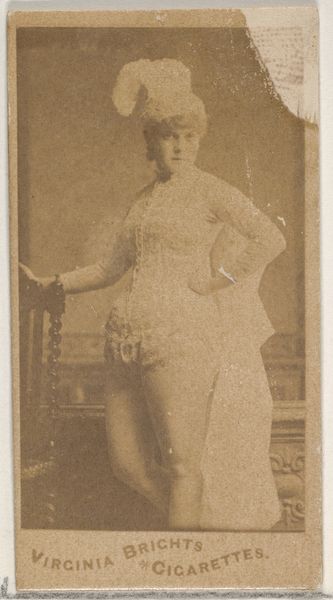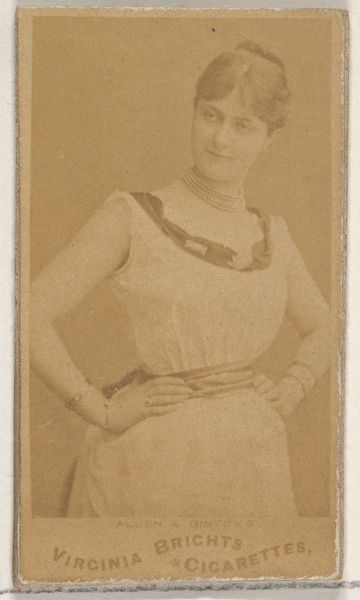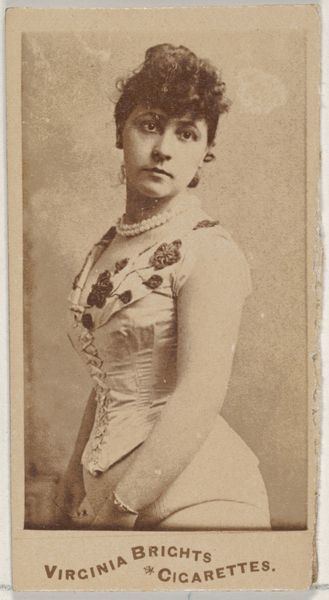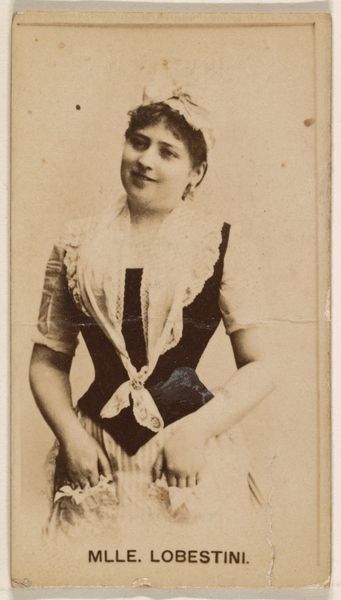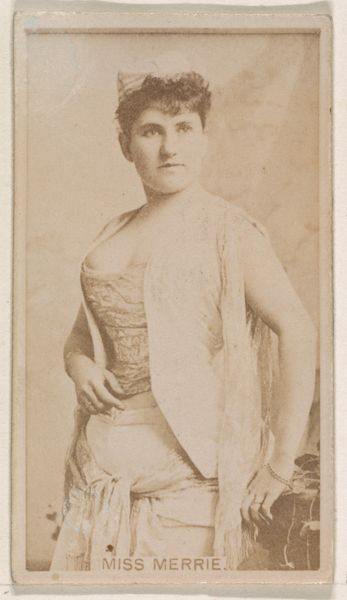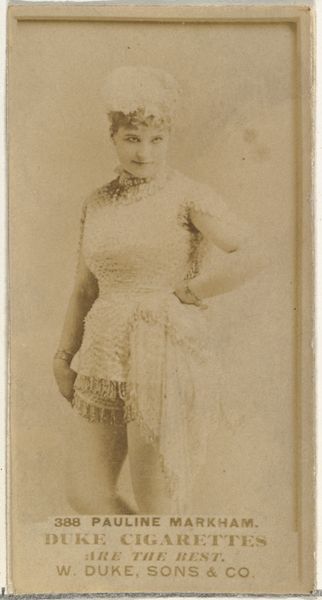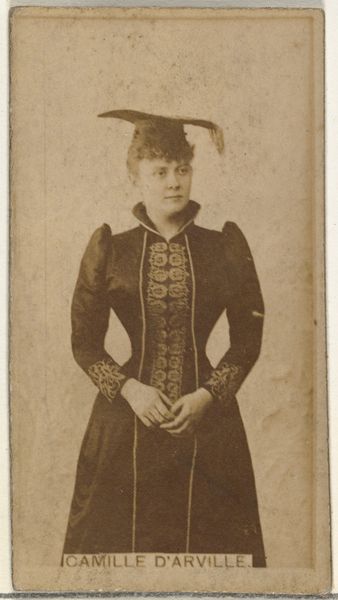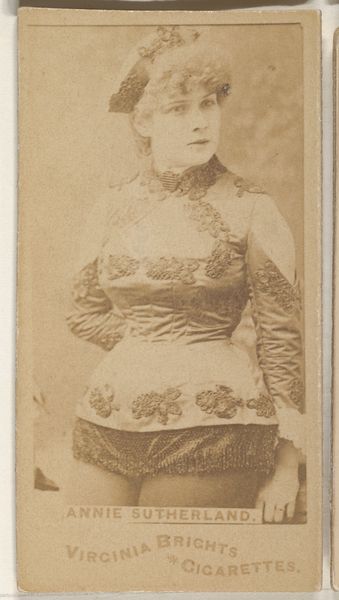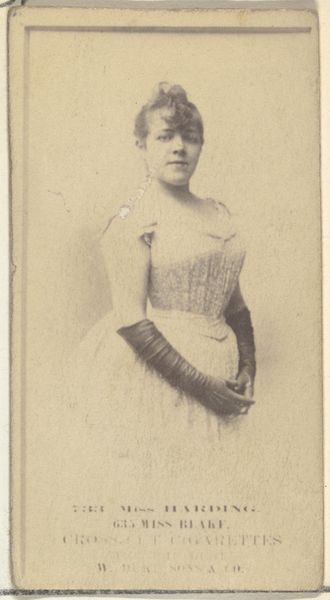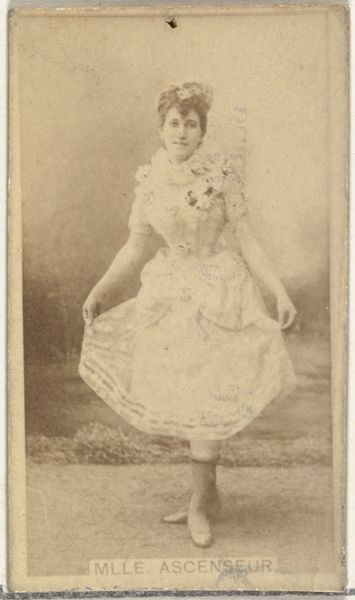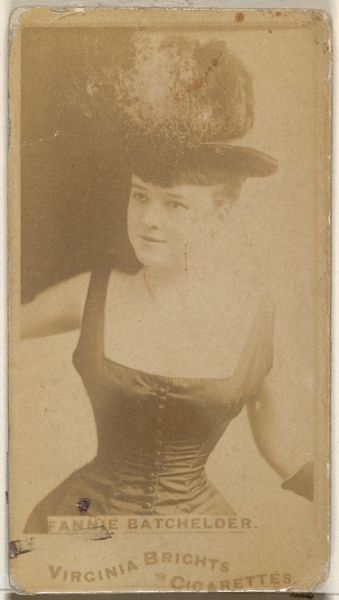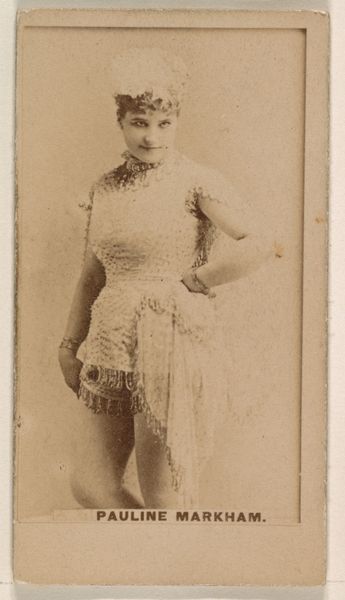
photography
#
portrait
#
photography
#
historical photography
#
historical fashion
#
realism
Dimensions: height 104 mm, width 62 mm
Copyright: Rijks Museum: Open Domain
Curator: Sytze Reinder Elzinga's circa 1900 portrait, "Portret van een onbekende jonge vrouw in Zeeuwse klederdracht", immediately strikes me. The stark black and white intensifies the subject's direct gaze and confident posture. What stands out to you? Editor: The sitter's clothing is captivating. The construction of her dark dress and intricate headwear is elaborate. You can tell there’s time and craft in that garment. Curator: Absolutely. The regional dress speaks volumes. We have to ask ourselves questions: what traditions are on display? What rules do the clothes encode in this cultural community and within the larger political landscape? What's her place in society at this time? The photograph also raises questions of the construction of identity. This image makes me think of Judith Butler’s concept of performativity and identity, even in seemingly rigid garments. Editor: Right, and from a materialist perspective, who actually produced that elaborate headpiece? Who wove that dark fabric into the dress? How was it marketed? It’s probably difficult for her to move freely, it has structural demands on the wearer, and you’re paying a price physically, which echoes class demands and labor constraints. It is important to ask about access and privilege as well as who produced and owned the garments. Curator: Precisely. And the way she carries herself communicates how the sitter wishes to be seen. The performative element extends to Elzinga as the photographer: how he wants to represent Zeeland and its people to a wider audience. Was this image mass-produced, contributing to the popular image of Zeeland? Editor: I'm very curious about what this specific photography workshop setting was like at the turn of the century in the Netherlands. Were materials mass-produced, were assistants paid fairly? What were their work conditions like? The clothing creates its own form of consumerism too; this is an industry with global consequences, but there is a very precise look on display, and there is meaning to it. Curator: Thinking about her hand on her hip, this isn’t just an ethnographic document. It has a distinct composition and is an act of defiance against dominant gender portrayals within a broader political environment, because her clothing has a strong voice as an individual and is also a symbol of this collective place and population. Editor: I'm particularly moved to think about all the steps taken and production required, which still resonates in an image taken with digital equipment. The echoes of the Industrial Revolution reverberate and speak about the economics of photography. Curator: Considering her pose and expression in relation to fashion theory opens so many questions about both how women express themselves, and what’s expected of them within and outside of their own circles. Editor: Yes, and paying attention to craft in our consumer-driven world makes us examine value, labor, and the history behind the things that we wear, make and, ultimately, consume.
Comments
No comments
Be the first to comment and join the conversation on the ultimate creative platform.
